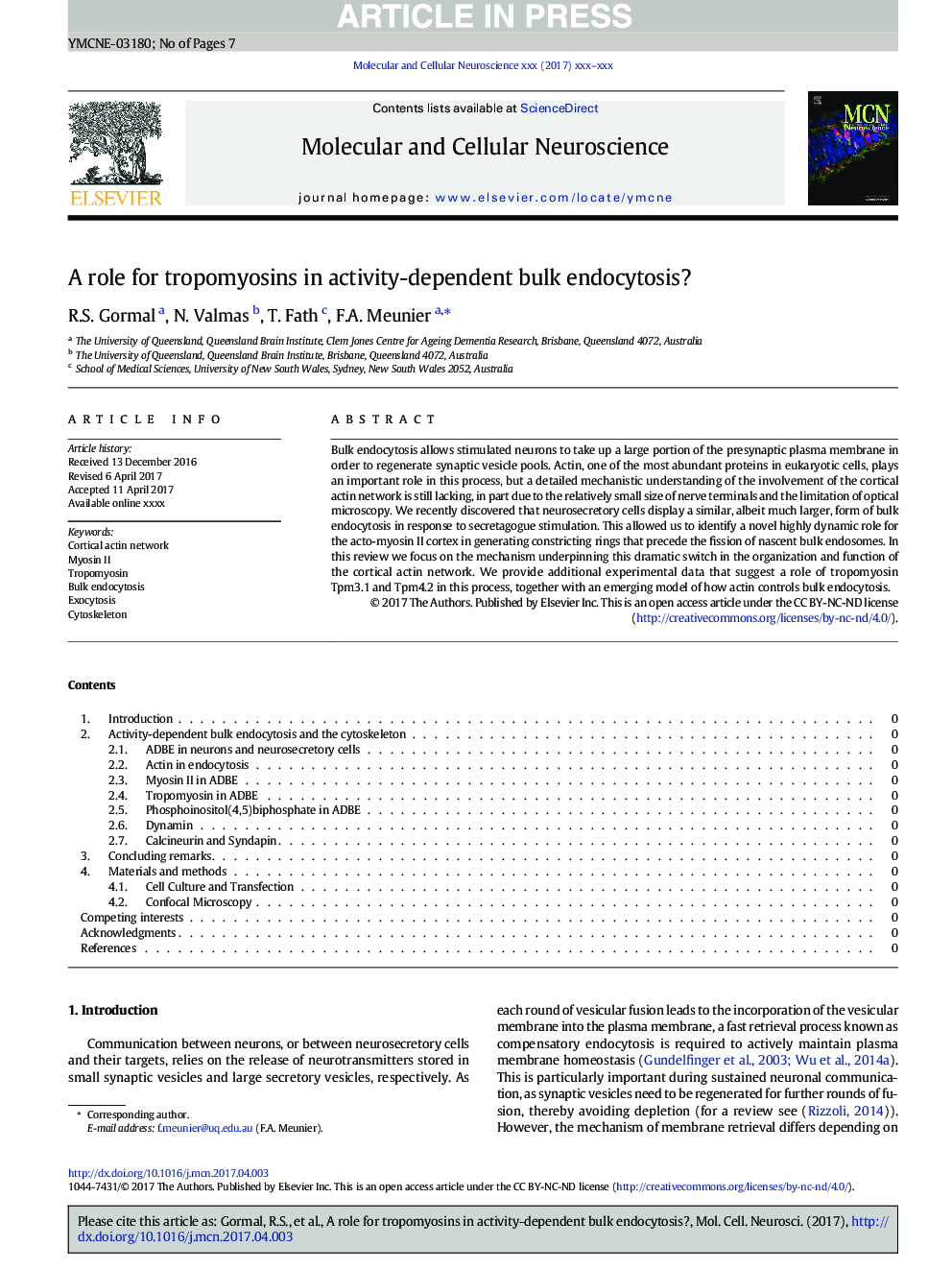| Article ID | Journal | Published Year | Pages | File Type |
|---|---|---|---|---|
| 8478439 | Molecular and Cellular Neuroscience | 2017 | 7 Pages |
Abstract
Bulk endocytosis allows stimulated neurons to take up a large portion of the presynaptic plasma membrane in order to regenerate synaptic vesicle pools. Actin, one of the most abundant proteins in eukaryotic cells, plays an important role in this process, but a detailed mechanistic understanding of the involvement of the cortical actin network is still lacking, in part due to the relatively small size of nerve terminals and the limitation of optical microscopy. We recently discovered that neurosecretory cells display a similar, albeit much larger, form of bulk endocytosis in response to secretagogue stimulation. This allowed us to identify a novel highly dynamic role for the acto-myosin II cortex in generating constricting rings that precede the fission of nascent bulk endosomes. In this review we focus on the mechanism underpinning this dramatic switch in the organization and function of the cortical actin network. We provide additional experimental data that suggest a role of tropomyosin Tpm3.1 and Tpm4.2 in this process, together with an emerging model of how actin controls bulk endocytosis.
Related Topics
Life Sciences
Biochemistry, Genetics and Molecular Biology
Cell Biology
Authors
Rachel Gormal, Nicholas Valmas, Thomas Fath, Frederic Meunier,
